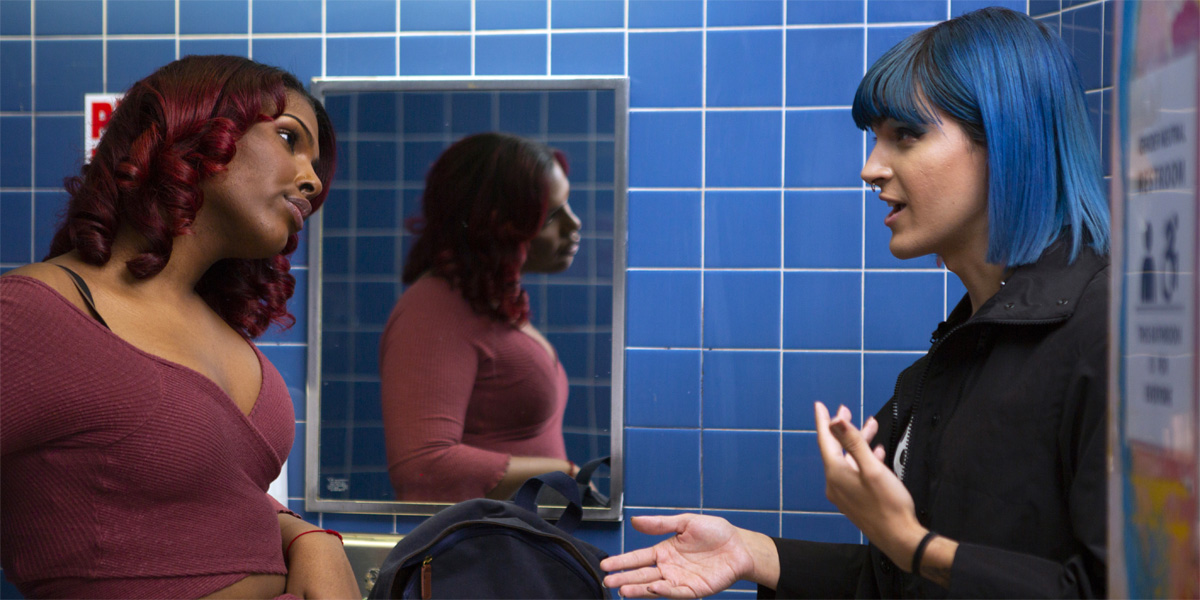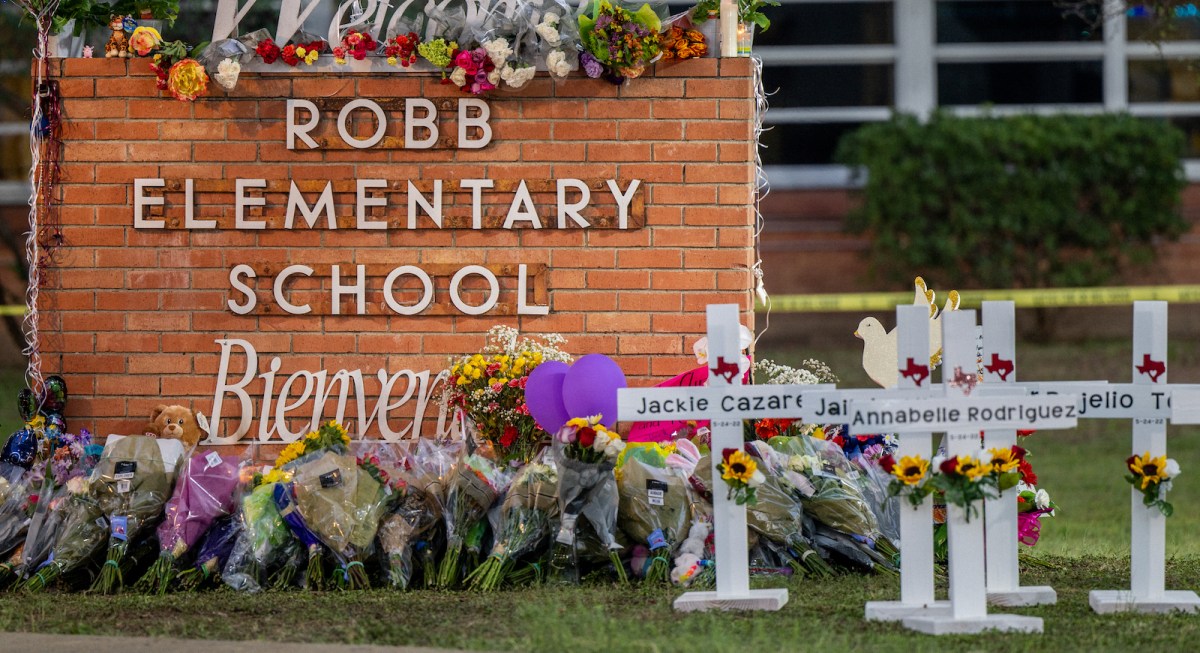“If you knew your friend was eating dirt, what would you do? You know it’s not nutritional. It doesn’t do them any good. Why would you let them go on living like that?”
This question was asked of my religion class in 2014 during our lesson on homosexuality. Never mind that a handful of students in the room, including myself, were not straight. I felt unsafe and terrified of what would happen if I came out as gay. I was too scared to even let myself think about the possibility of being transgender because I knew, deep down, that my aversion to being called a girl was a sign that I wasn’t one in the first place.
Today, as an out and proud nonbinary trans person, I’m met with gasps when I talk about my high school experience. I went to a single-sex Catholic school that conflated sex with gender, calling itself an “all girls” school. Sometimes, it was the worst. Other times, it felt like a secret world with nearly all the elements of a feminist utopia: freedom from the gaze of teenage boys, women in nearly every leadership role, and young women being assured that they’re smart and capable.
I used to ask my mom why boys couldn’t come to our school. We had a great art program, International Baccalaureate classes, and some really amazing faculty. Everyone should be able to access great education, but in my case, it came at a major cost: my gender identity went against the most basic prerequisite of admission. I was not a girl. I’m a nonbinary trans person.
My required religion classes made it clear that LGBTQ+ people were to be loved but that we were sinners who needed to repent and change in order to get to heaven. In biology class, I remember leaving class fuming after learning about sex chromosomes. “XX means you’re a girl and you have the babies. XY means you’re a boy and you have the sperm,” my teacher said. She shut down myself and others when we tried to bring up transgender and queer people, reminding us that “it’s none of her business but it’s not what nature intended.” That class solidified what I’d always suspected: my queer and trans identity was not to be acknowledged because it was viewed as wrong and unnatural. I remember when a staff member got fired for attending her daughter’s wedding because there were two brides. My mom worked at my high school and I could not bear the thought of her losing her job because of my identity.
Why do single-sex schools exist in the first place and what experiences have other trans folks had at single sex high school schools? Grey, a nonbinary alumnus of Notre Dame Academy in Ohio, shared the following: “I wish I had known that there were other options (other than the binary) for me to explore and understand. I had to do most of the research into gender on my own and it took me about 3 years before I felt confident that I had learned enough to tell others how I identified. I wish that my high school classes (or clubs, or teachers, or classmates) could have shared knowledge so I wasn’t alone in the experience.”
Single-sex education has been around for centuries, often justified using religion and studies on the benefits of single-sex education. At times, single-sex schools were created specifically to ensure women were able to access education at times and places when educational opportunities for women were sparse. Such is the case with women-only institutions like Salem College, established in 1772 with the goal of providing education to women who were often denied entry into traditional co-ed schooling. In 1972, became illegal for federally funded (meaning public) schools to discriminate based on sex following the Education Amendments of 1972, which included Title IX. This set of amendments decreased the number of public single-sex schools, pushing them to the private, often religion based school systems. All this changed in 1996, though, when a Supreme Court ruling made public single-sex schools legal again following research findings that suggested improved academic performance in single sex schools.
“The consequences of not being seen or affirmed in high school as a nonbinary person contributed to years of disordered eating, depression, anxiety and social isolation.”
In other cases, the root reasons for creating these schools is often based on the idea that men and women are fundamentally different and learn in different ways. In 2005, the U.S. Department of Education conducted a systematic review of research on the effects of single-sex education following the 1996 Supreme Court ruling that allowed public single-sex schools to grow in numbers in the early 2000s. The review found some minor academic related benefits to single-sex schools but found that the overall benefit or harm of single-sex education was not significant.
Our culture has operated on the false assumption that sex assigned at birth always aligns with gender identity and expression, effectively ignoring the existence of transgender and nonbinary people. The American Civil Liberties Union (ACLU) has denounced single-sex education on the grounds that “sex segregation in public education perpetuates antiquated gender stereotypes” and “diverts resources from initiatives that actually will improve the education of both boys and girls, such as reducing class sizes and increasing teacher training.” These sentiments are echoed in articles written by psychologists, education experts, and the previous president of the American Psychological Association. In 2020, most single-sex American schools are private and many have religious ties.
Though numbers are declining, these schools can still do great harm to trans and cisgender students by hammering in harmful gender norms. “The consequences of not being seen or affirmed in high school as a nonbinary person contributed to years of disordered eating, depression, anxiety and social isolation,” said Caelan Holcombe, who attended Our Lady of Mercy, a single-sex high school in New York, “It is only now as I physically and socially transition that I am starting to heal from decades without social support for my identity.” Given the harm single-sex education can cause, society seems to have progressed past any reason for them.
Many of the trans folks I interviewed had mixed feelings about their experience at single-sex schools. Like me, K, a genderfluid and nonbinary student, was able to benefit from seeing girls growing in an environment run by women. “I feel like going to an all girls school both helped and hindered the development of my gender identity,” K said. “On one hand, I saw many different girls expressing themselves in many different ways — not just as femme, masc, or anything in between — in a relaxed environment where no one felt the need to ‘dress up’ to show off. On the other hand, I felt like because I was going to an all girls school, I had to portray myself as a feminine girl and couldn’t look to traditionally male oriented fashion.” K captures the contradictory feelings expressed by nearly every trans person I talked to about the issue. Above all, trans folks I spoke to prioritized inclusive sex education, a supportive administration, and ultimately, the knowledge and affirmation required to express their gender freely, all things hindered by single-sex education.
“I did not have internet access during high school and I lived in an extremely small and isolated community with an anti-LGBT cult. This impacted my knowledge on being LGBT and my safety.”
The sex a person was assigned at birth should not impact the quality of their education. Forcing students into hyper gendered spaces is a slippery slope to harmful experiences for transgender students, leading them to possibly dislike who they are, stay in the closet for safety, and become fundamentally uncomfortable with their own identity. With repeated enforcement, these harmful side effects of single-sex schools can cause trauma with ramifications far outlasting the four years spent in high school. Transgender people’s lives are already at risk especially for Black and Brown trans folks. A survey by GLSEN found that 75% of transgender students feel unsafe at school and near 50% of transgender youth attempt to take their own lives. The life-threatening effects of a school that does not match a student’s gender identity should be reason enough to rethink single-sex schools existence. Trans people of color, who face the compounded effects of racism and transphobia, are at even higher risk of suicide or premature death. “I was frequently beaten, called queer, and a fag, and sexually harassed at school,” said Jay, a First Nations and Inuit student at a single-sex school in Canada. “I did not have internet access during high school and I lived in an extremely small and isolated community with an anti-LGBT cult. This impacted my knowledge on being LGBT and my safety.” Gender policing in single-sex schools reinforces the trauma that trans people of color face on a daily basis and, given that many single-sex schools are private and overwhelmingly white (nearly 70% in 2015 in the U.S.), trans students of color are likely to face racism and race-based gender discrimination as well.
With all the harm single-sex schools can do to trans youth — and to cisgender youth, who are also impacted by strict gender roles — single-sex education is outdated. Trans youth should learn and grow in an environment built on principles of inclusion and equity, ultimately doing away with the exclusionary and binary structures enforced by single-sex schools.
If I had attended an all-gender high school with inclusive attitudes about gender, my life would be very different than it is now. Access to knowledge about being transgender and nonbinary would save me the years I spent undoing trauma. Freely existing as a nonbinary person during my formative years would have allowed me to radically love myself and those around me. Had I been encouraged to celebrate gender differences rather than police them, I would have found the love and acceptance I craved during a time when I desperately needed it. As school season begins once again, what young people deserve at the very least is an end to single-sex schools.







